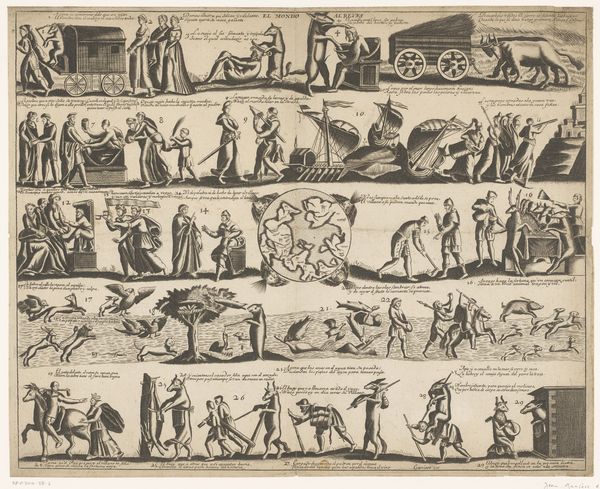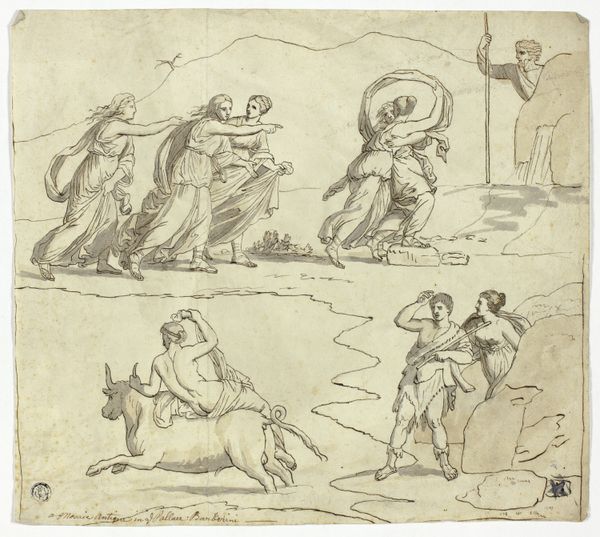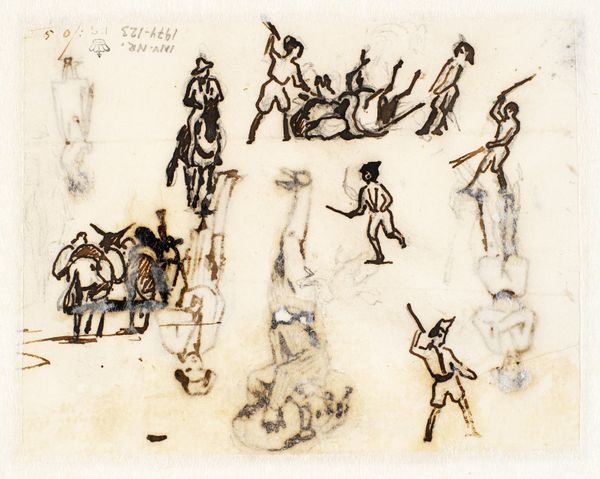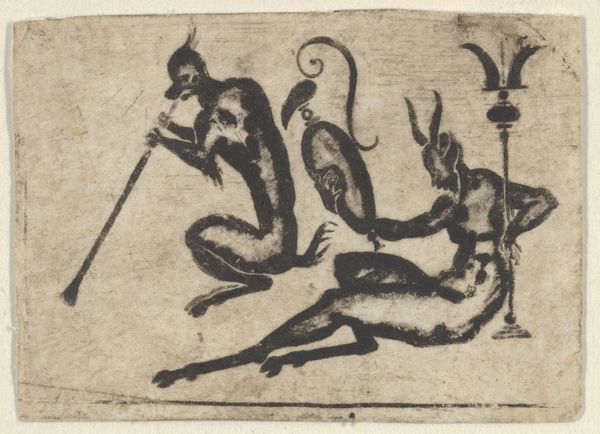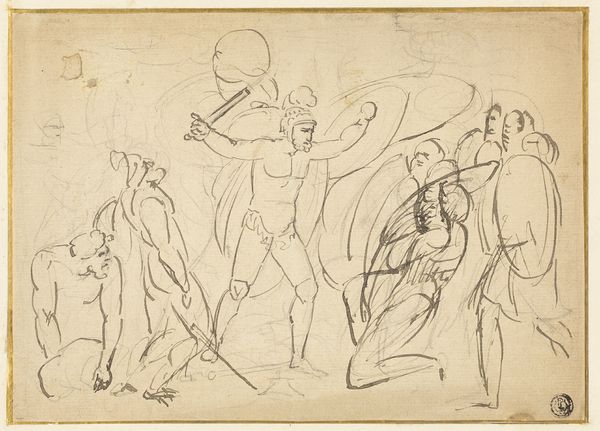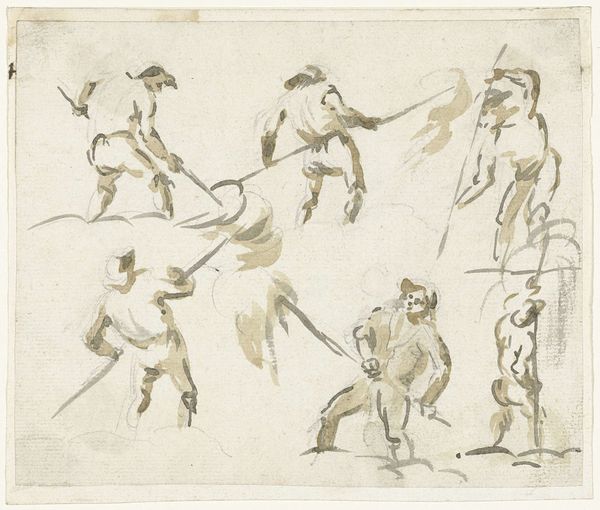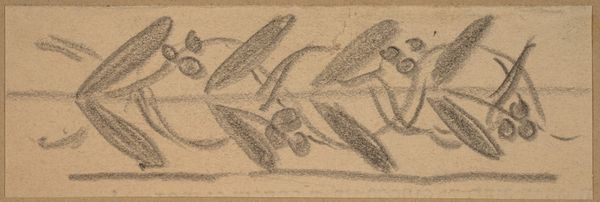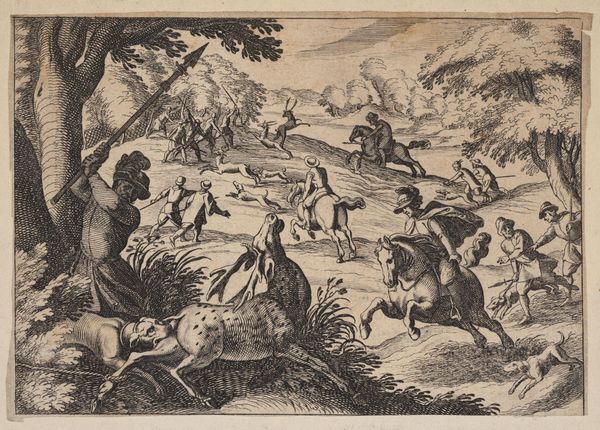
Blackwork Design for Goldsmithwork with Satyrs and Meanads 1616
0:00
0:00
drawing, print, ink, engraving
#
drawing
#
allegory
# print
#
pen sketch
#
figuration
#
11_renaissance
#
ink
#
genre-painting
#
history-painting
#
engraving
Dimensions: Sheet: 1 3/4 × 2 1/16 in. (4.5 × 5.3 cm)
Copyright: Public Domain
Curator: This is a fascinating print titled "Blackwork Design for Goldsmithwork with Satyrs and Maenads." Andreas Gentzsch created it in 1616, and it's currently housed at the Metropolitan Museum of Art. Editor: Immediately, the chaos of these intertwined figures jumps out. It's like peering into a fever dream of mythological mayhem. What are we really looking at here? Curator: It's believed to be a design intended for elaborate goldsmith work. Think goblets or ornamental plaques. The scenes depict satyrs and maenads engaged in various Dionysian revelries – celebrating intoxication, freedom, and primal instincts. Editor: Right, so we’re talking about a deliberate staging of transgression. Given the period, it’s interesting to consider how images like these functioned within the confines of courtly taste. Are these representations truly celebratory, or is there a moralizing undercurrent—a subtle warning against unchecked hedonism? What statements were artists and patrons trying to make when putting works into the world? Curator: Precisely. While seemingly classical, we must view the symbolism through a 17th-century lens. The engraving served multiple purposes. Firstly, the technical prowess showcased was in itself a spectacle of social distinction; secondly, these Bacchanalian scenes, while referencing classical mythology, also spoke to broader discussions about gender, power, and the perceived dangers of female liberation. This interplay between history and present sociopolitical realities are what inform the choices of those commissioning these images. Editor: I notice the very deliberate blackwork style—the stark contrast lends a sense of drama but also limitation. Restricting the tonal range could be read as a visual metaphor for constraints placed on revelry within an ordered society. Curator: An astute observation. The stark contrasts highlight the tension inherent in representing liberation within the controlled setting of court culture. Consider the positioning of these characters as emblems of resistance but as also constrained by the function for adornment, which somewhat contains this radical vision. Editor: Considering the social context of 17th-century art production is paramount to uncovering multiple layers of potential commentary here. Curator: Indeed. A fruitful dive that underscores how cultural narratives shaped even seemingly innocuous decorative arts.
Comments
No comments
Be the first to comment and join the conversation on the ultimate creative platform.


